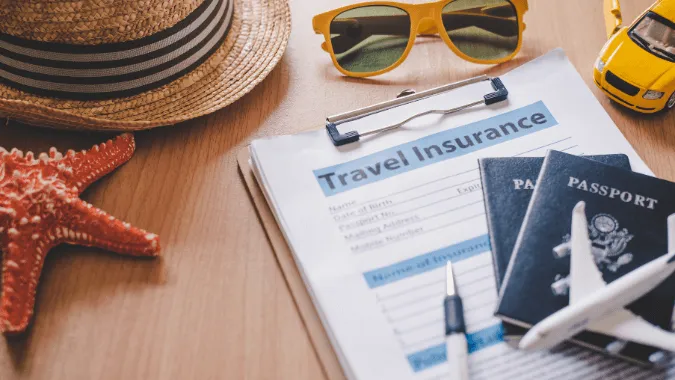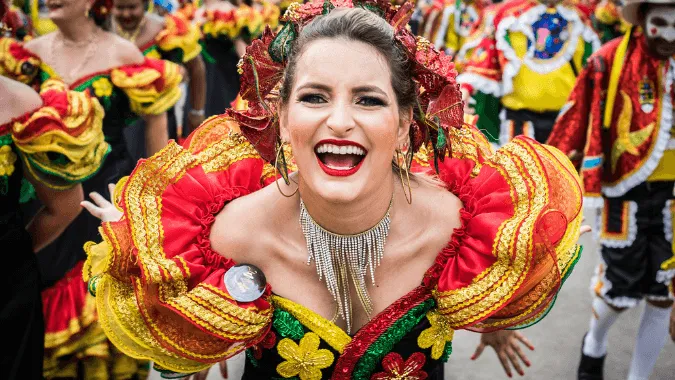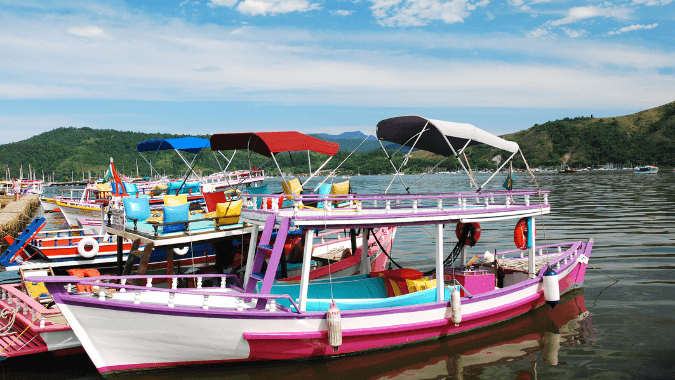Culture & Lifestyle
A Beginner's Guide to São Paulo
Tags:
Read our beginner's travel guide to São Paulo, Brazil for essential information on how to plan your trip. When to visit, what to pack, where to stay, what to eat, and how to get around – everything you need to know before you go. ![A Beginner's Guide to São Paulo]()
![A Beginner's Guide to São Paulo]()
![A Beginner's Guide to São Paulo]()
![A Beginner's Guide to São Paulo]()
One of the main points of interest in Sao Paulo is the Municipal Market where you can find and enjoy a variety of cuisine / Photo: https://unsplash.com/@
São Paulo is one of the world’s culinary capitals. At once diverse and vibrant, the gastronomic experiences here are indeed the best in South America. The city famously dedicates days of the year to certain foods; they are unique festivals of cuisine in which restaurants and snack bars come together to celebrate local delicacies. São Paulo is serious about its food. For tradition, pizza is the way to go. With approximately six thousand pizzerias scattered around the city, a great number of exciting and curious toppings can be found: the classic combination of tomato and mozzarella is replaced by banana, chocolate, or guava. To sample a pizza here is to have a truly authentic culinary adventure. More classic local foods can be found at gourmet hotspot Mercado Municipal. Fresh vegetables, tropical fruits, exquisite seafood, exotic spices, and heavenly pastries are all on offer. The Italian mortadela sandwich is the signature dish here - head to Bar do Mané for the best one in town. For an alternative quick, yet highly satisfying snack on-the-go, wander over to a street vendor or small café and order a pastel – a very thin crunchy crust stuffed with whatever you want. Praça Benedito Calixto is the place to go to try one of these. ![A Beginner's Guide to São Paulo]() São Paulo is famously gridlocked from morning to evening. The city’s public transport system is among the most complex in the world: 15,000 buses operate on over 1,300 separate routes. In short, it’s chaos. To save yourself valuable vacation time, use the subway - it’s cheap, fast, and reliable. Most lines open around 5am and run through midnight. A “Common Ticket” allows up to four trips (on the subway or bus) within three hours for the cost of a single fare. For more information, check out the official government website. Whichever public transportation you choose, avoid peak hours (7 to 10 am and 5 to 8 pm) and download applications to get around the city. The official site of the metro network is fundamental. Buy the Single Ticket at kiosks or at metro stations and SPTrans to use public transport (bus, train, metro and minibuses). You can make up to 4 journeys by bus for a period of three hours or use the train and metro for two hours and you will only pay extra for the connection. Travel Tip: Don't forget to enjoy everything São Paulo has to offer.
São Paulo is famously gridlocked from morning to evening. The city’s public transport system is among the most complex in the world: 15,000 buses operate on over 1,300 separate routes. In short, it’s chaos. To save yourself valuable vacation time, use the subway - it’s cheap, fast, and reliable. Most lines open around 5am and run through midnight. A “Common Ticket” allows up to four trips (on the subway or bus) within three hours for the cost of a single fare. For more information, check out the official government website. Whichever public transportation you choose, avoid peak hours (7 to 10 am and 5 to 8 pm) and download applications to get around the city. The official site of the metro network is fundamental. Buy the Single Ticket at kiosks or at metro stations and SPTrans to use public transport (bus, train, metro and minibuses). You can make up to 4 journeys by bus for a period of three hours or use the train and metro for two hours and you will only pay extra for the connection. Travel Tip: Don't forget to enjoy everything São Paulo has to offer.
¿When To Go?

São Paulo is an ideal city to visit all year round / Photo: joao Tzanno
São Paulo is simply enormous. It is vast and intimidating. As your flight glides into the city, you will be greeted with vistas of a seemingly endless, uninspiring concrete jungle, but once you’re down there, it soon becomes clear that this is a vibrant and charismatic destination. São Paulo Biennial, Gay Pride Parade, International Film festival, and Virada Cultural – these are just some of the global events to take place annually in this wonderful city. Add to that list countless art exhibitions, music concerts, fashion shows aplenty, and international sporting action, and you begin to understand why São Paulo has developed into a fabulous multicultural megalopolis. São Paulo represents a great city getaway all year round due to its humid subtropical climate. June through November is the best time to visit – these cooler winter and spring months bring bearable temperatures and azure blue skies. December to February is low-season and conditions at this time of year are more extreme – it’s hot (average 35°C), sultry, and the rain is heavier. If you are looking at summer beach holidays on the nearby Costa Verde, be sure to book well in advance.¿What To Pack?

Remember to bring clothes for different types of situations, pack from sunglasses to light jackets / Photo: Daytours4u.
São Paulo is an eclectic urban hub, so bring clothes for all occasions – beachwear (if you fancy popping to the coast), comfortable shoes for exploring the city, smart apparel for dining, and your very best robes for the theatre. The city’s unstable weather patterns mean that bringing an umbrella and raincoat is advisable in order that you don’t have to cut short your excursions due to rain. Even in the height of summer, it is recommended to pack a light jacket as the temperatures at night may drop sharply.¿Where To Stay?

Choosing the right place to stay in Sao Paulo is key to making your visit a success. Choose areas such as Jardins, Vila Madalena, Pinheiros, Itaim Bibi / Photo: Wylkon De Queiroz.
In a city as colossal as this, accommodation location is everything. Wherever you decide to stay, it is essential that you are close to a subway line: the city has notorious traffic jams throughout the day and you do not want to spend hours travelling from one side of the city to the other in a bus or taxi. The recommended areas are those that include tourist attractions, but it is not a rule. Avenida Paulista: A visitors’ favourite. Running through the heart of the city, this famous boulevard is a great base from which to explore. Dip into the Museu de Arte de São Paulo (MASP), marvel at the iconic Fiesp building, soak in the trendsetting bars along Rua Augusta, and take a stroll down the luxury shopping street of Rua Oscar Freire. Around-the-clock entertainment on every corner can be found here. Jardins: Located next to Avenida Paulista, Jardins is one of São Paulo’s most sophisticated neighbourhoods. If you’re looking for luxurious hotels, upscale restaurants, and brand boutiques, this is the spot for you. The verdant wonder of Parque Trianon is also close by and the Museu da Imagem e do Som (Museum of Image and Sound) displays a fabulous collection of films, photographs, albums, and recordings that together document the evolution of Brazilian culture. Vila Madalena and Pinheiros: Just west of the city centre, the bohemian district of Vila Madalena presents untold authentic attractions in the form of quaint independent art galleries and wonderfully elegant eateries. Instituto Tomie Ohtake is one of the highlights here; this spectacular cultural space was founded by renowned architect Ruy Ohtake and regularly features exhibitions by prominent local artists. For more rustic artistic offerings, wander down Beco do Batman (Batman’s Alley): a place where hipsters from across the world come to make their mark on the extraordinary graffiti-laden walls. Vila Mariana: Stay here to have the beautiful Ibirapuera Park on your doorstep. This green oasis is home to many major landmarks including the Pavilhão Japonês (Japanese Pavilion), Museu de Arte Contemporânea (MAC), Museu de Arte Moderna de São Paulo (MAM), and the Pavilhão das Culturas Brasileiras (Brazilian Cultural Pavilion). This is also the place to lodge if you want to sample the best pizzas in town at Quintal do Bráz, take in some local cinema at Cinemateca Brasileira, or taste the renowned caiprinhas at Bar Veloso.¿What To Eat?

One of the main points of interest in Sao Paulo is the Municipal Market where you can find and enjoy a variety of cuisine / Photo: https://unsplash.com/@
São Paulo is one of the world’s culinary capitals. At once diverse and vibrant, the gastronomic experiences here are indeed the best in South America. The city famously dedicates days of the year to certain foods; they are unique festivals of cuisine in which restaurants and snack bars come together to celebrate local delicacies. São Paulo is serious about its food. For tradition, pizza is the way to go. With approximately six thousand pizzerias scattered around the city, a great number of exciting and curious toppings can be found: the classic combination of tomato and mozzarella is replaced by banana, chocolate, or guava. To sample a pizza here is to have a truly authentic culinary adventure. More classic local foods can be found at gourmet hotspot Mercado Municipal. Fresh vegetables, tropical fruits, exquisite seafood, exotic spices, and heavenly pastries are all on offer. The Italian mortadela sandwich is the signature dish here - head to Bar do Mané for the best one in town. For an alternative quick, yet highly satisfying snack on-the-go, wander over to a street vendor or small café and order a pastel – a very thin crunchy crust stuffed with whatever you want. Praça Benedito Calixto is the place to go to try one of these. ¿Getting Around?

The metro is the best way to get to any part of the city, escape the chaotic traffic and save time / Photo: metroreporte.com.
By: Daytours4u Content Team.
Tags:
Search
-
Exciting 4x4 route: São Luís and FortalezafromUS$1,014
-
Vila Gale Mares Resort All InclusivefromUS$100
-
Ecotourism in Chapada DiamantinafromUS$672
-
All inclusive Vila Gelé Cumbuco ResortfromUS$999
-
Full Day Cafayate Tour from SaltafromUS$68
-
Transfer Aeroparque - Buenos AiresfromUS$46
-
-
Transfer Ezeiza - AeroparquefromUS$91
-
-
Excursion to El Chaltén from El CalafatefromUS$153
-
-
-
-
-
-
-
-
-
-
-
Daytours4u © 2012-2019. Use of this website constitutes acceptance of the Terms & Conditions.
Open Chat
Hello, How May I Help You?



